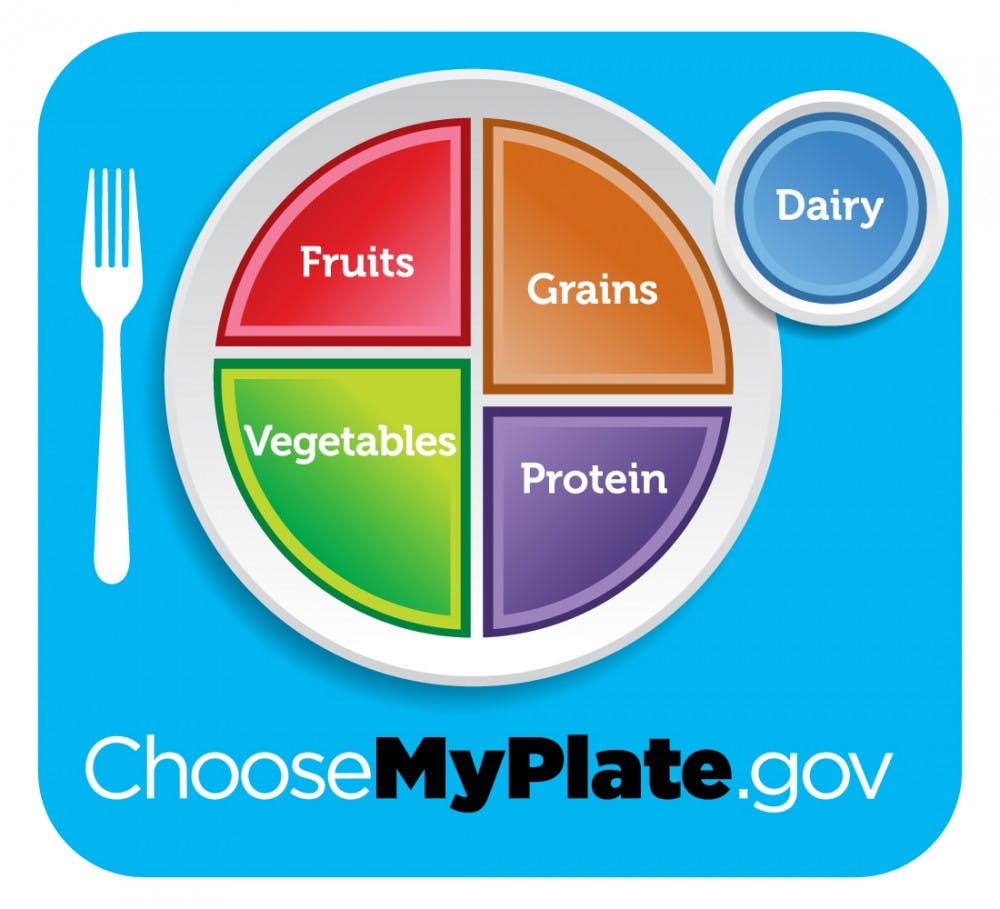The food pyramid, a product of the Dietary Guidelines for Americans, represents the optimal number of servings per day from each of the major food groups. The government uses the food pyramid to communicate healthy eating guidelines to families, children and adults. The U.S. Departments of Health and Agriculture collaborate to produce the guidelines, which have changed over the past few years.
“Within USDA, the Center for Nutrition Policy and Promotion is the lead agency that manages the process with support from the Agricultural Research Service,” professor of medicine Anna Maria Siega-Riz said.
In 2011, MyPlate replaced the original food pyramid structure with a diagram of a plate separated by food group. MyPlate currently serves as the the basis for federal food and nutrition policy, with the new diagram enabling guidelines to focus on each consumer individually.
The change from the food pyramid to MyPlate marked a shift from a nutritional diet to a personal approach. Instead of referring solely to serving sizes, appropriate proportions of each food group are outlined in relation to that of the other groups.
Food groups represented in MyPlate include grains, fruits, vegetables, protein and dairy. For women 19 to 30 years old, the diagram recommends two cups of fruit, six ounces of grains, two and a half cups of vegetables, five and a half ounces of protein and three cups of dairy products daily. The dietary recommendations for men in this age group are similar, requiring only an additional ounce of protein and grains and an additional half cup of vegetables.
The guidelines specify that the grains group should be further divided into whole grains and refined grains. Based on the diagram, refined grains intake should be limited to half that of whole grains. Furthermore, the consumption of saturated fats should be limited to less than 10 percent of total daily caloric intake
Disagreements between consumers or industries and the government often arise relating to the guidelines’ endorsement of certain foods. In 2015, when the Dietary Guidelines for Americans Committee almost did not endorse red meat as part of the healthy diet, the meat industry came into conflict with the DGAC.
“There was a strong political backlash from the meat industry [in 2015], led by the North American Meat Institute, which also strongly opposed the DGAC recommendation to take environmental sustainability into consideration when making dietary recommendations. Ultimately these sustainability provisions were not included in the final Guidelines,” Politics Prof. Paul Freedman said.
The DGAC puts out healthy eating recommendations with the intent of helping individuals achieve and maintain a healthy weight, decreasing the prevalence of diseases and promoting an increased level of health for everyone two years and older.
“The food pyramid was the government’s translation of the Dietary Guidelines into actionable consumer messages that [are] crucial to help individuals, families and communities achieve healthy eating patterns,” Siega-Riz said.
The primary purpose of food diagrams is to prevent disease. Specifically, the guidelines seek to prevent diet-related chronic diseases, such as cardiovascular disease, type 2 diabetes, certain cancers and obesity.
The guidelines are reevaluated every five years. Since the guidelines are based on nutritional science and surveys of the population, the DGAC publishes reports based on their research findings and justifying the information within MyPlate. Currently, guidelines focus on eating patterns due to recent research suggesting most Americans do not consume a diet reflecting the DGAC’s recommendations.





